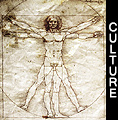An extinct language is a language which no longer has any native speakers. Generally this occurs when a language is directly replaced by a different one, for example, Coptic, which was replaced by Arabic, or, in Italy, Etruscan, which was replaced by Latin.
By extension, a language which has no native speakers in the youngest generation (or which, in a stricter definition, has ceased to be the lingua franca in its traditional linguistic areas) is called "moribund", while a language with very few native speakers is called "endangered" or "imperilled."
The extinct and dead languages of Italy include:
- Elymian, language of unknown origin spoken by an ancient civilization located in Sicily.
- Etruscan, a language spoken and written in the ancient region of Etruria (current Tuscany, a name that goes back to the Tusci, another name for the Etruscans) and in parts of what are now, in Italy, Lombardy, Veneto, and Emilia-Romagna (where the Etruscans were displaced by the Gauls). However, Latin superseded Etruscan completely, leaving only a few documents and a few loanwords in Latin (e.g., persona from Etruscan phersu), and some place-names, like Parma. Most scholars agree today that Etruscan is unrelated to the Indo-european languages and related only to other members of what is called the Tyrrhenian language family which in itself is isolated. The Etruscan script stems from an alphabet of the West Greek type, which itself comes from Old Semitic. This probably explains why Etruscan, like most semitic languages, is written from right to left, even though Etruscan is not a semetic language.
- Faliscan, a language written in a variety of the Old Italic alphabet, as proved by some 36 short inscriptions, dating from the 3rd and 2nd centuries BC. The script is derived from the Etruscan, and written from right to left, but showing some traces of the influence of the Latin alphabet.
- Umbrian, an Italic language, not to be confused with the modern dialect Umbrian, which is a romance language. Ancient Umbrian was formerly spoken in the ancient Italian region of Umbria and originally also in Toscana before the people living there were expelled by the Etruscans. Known primarily from seven bronze plates from Iguvium (now Gubbio), de Tabulae Iguvinae, which contain some notes on the ceremonies and statutes for priests and date back to 400 - 150 BC.
- Venetic, a centum (western Indo-European) language once spoken in the Veneto region of Italy. Venetic should not to be confused with Venetian, the modern dialect, which is a romance language. The precise affiliation of Venetic with the other Indo-european languages remains uncertain. It probably does not belong to the Italic language subfamily. Venetic became extinct around the 1st century when the local inhabitants were assimilated into the Roman sphere. The language is attested by over 300 short inscriptions dating between the 5th century and 1st century, which use a variety of the Northern Italic alphabet, similar to the Old Italic alphabet. Venetic was written in scriptio continua, i.e. without spaces separating the words and from right to left (sinistrograde), although dextrograde (from left to right) writing was not unusual. A few Venetic texts (like some Etruscan inscriptions), were written in boustrophedon style, i.e. alternating writing direction every other line.
- Volscian, another Italic language, which was spoken by the Volsci and closely related to Oscan and Umbrian.
Other extinct and dead languages of Italy include: Lepontic, Ligurian, Messapian, Oscan, Raetian, Sican, Sicel, and of course, Latin.
.
.
.










